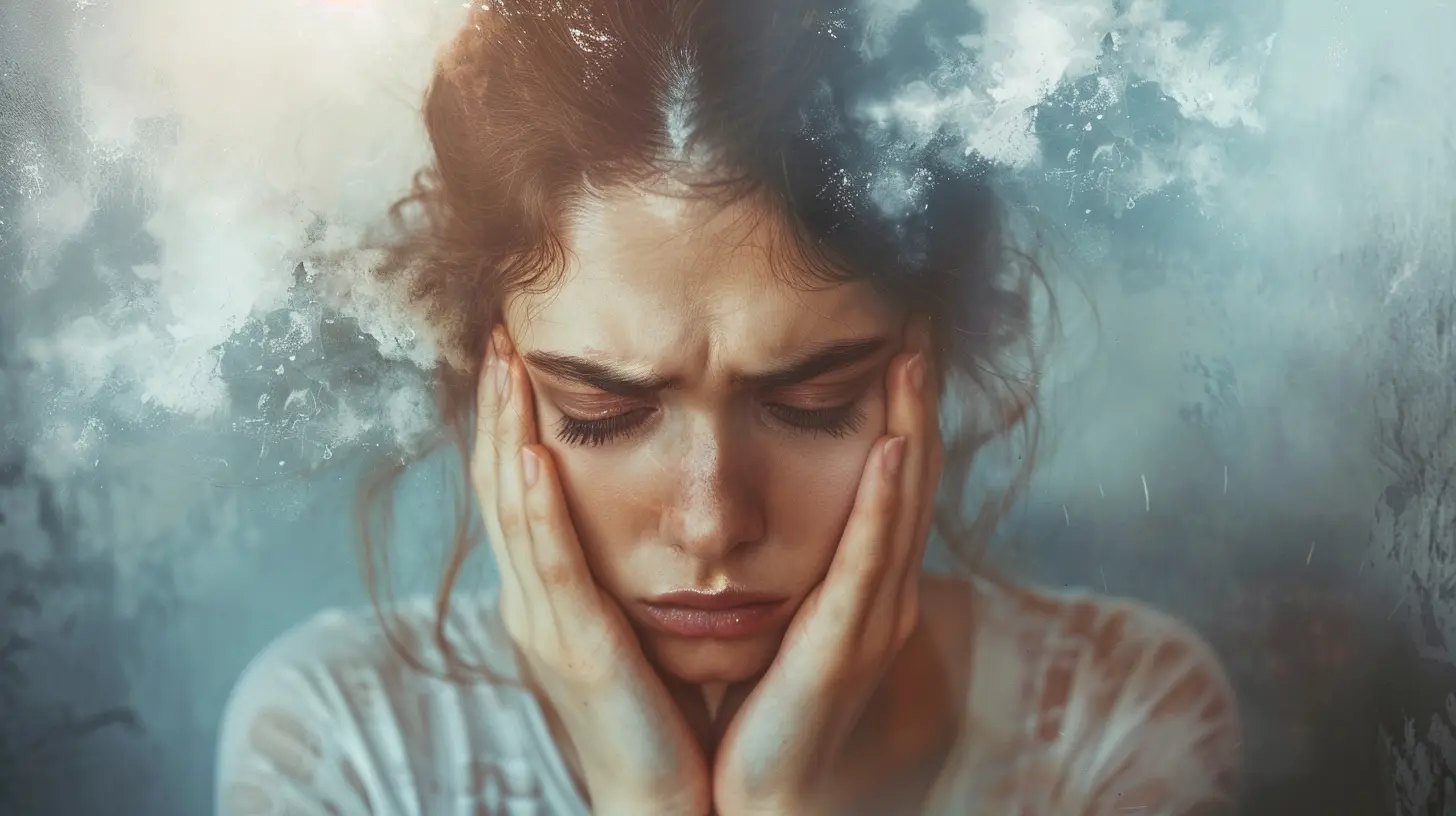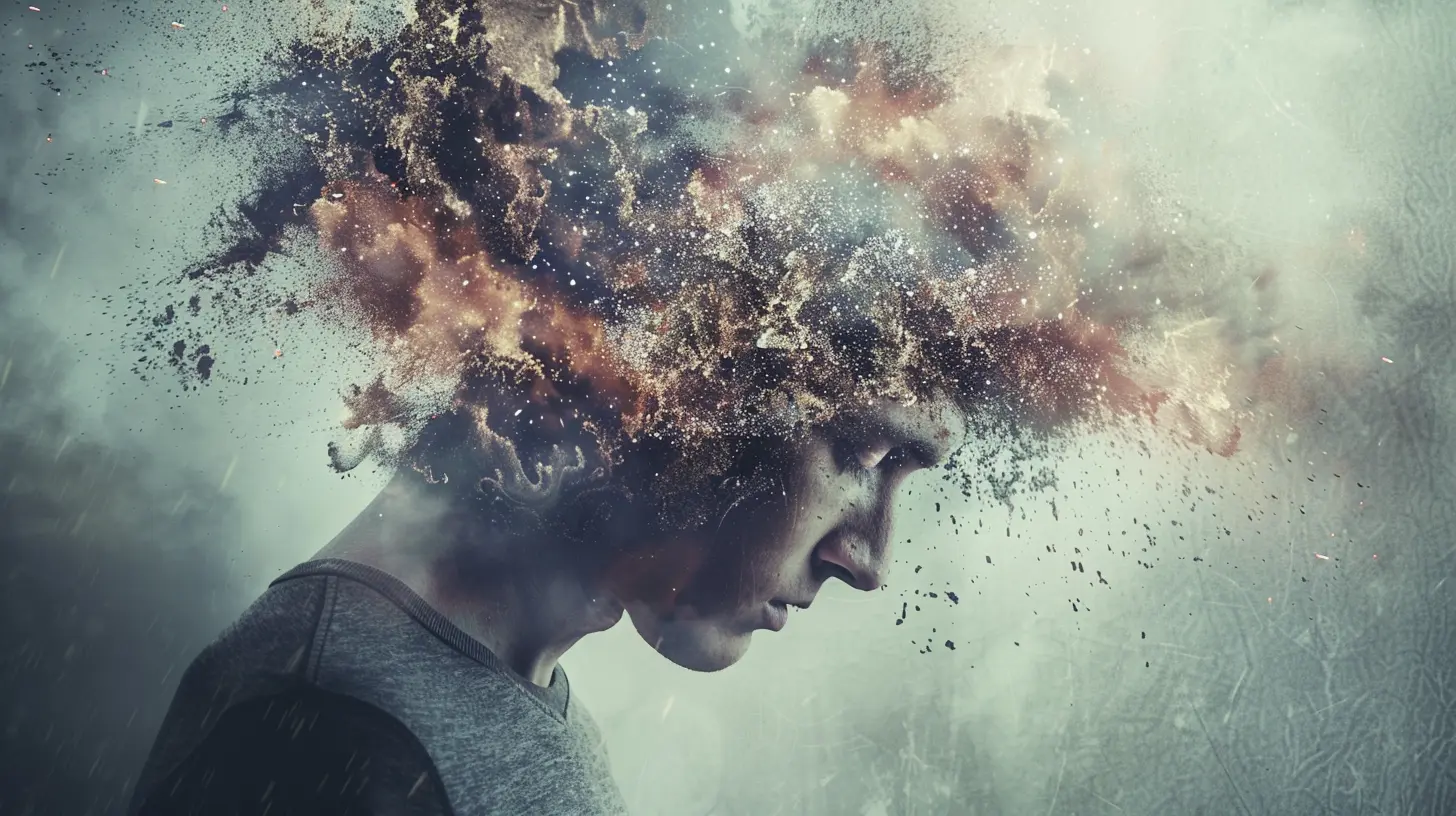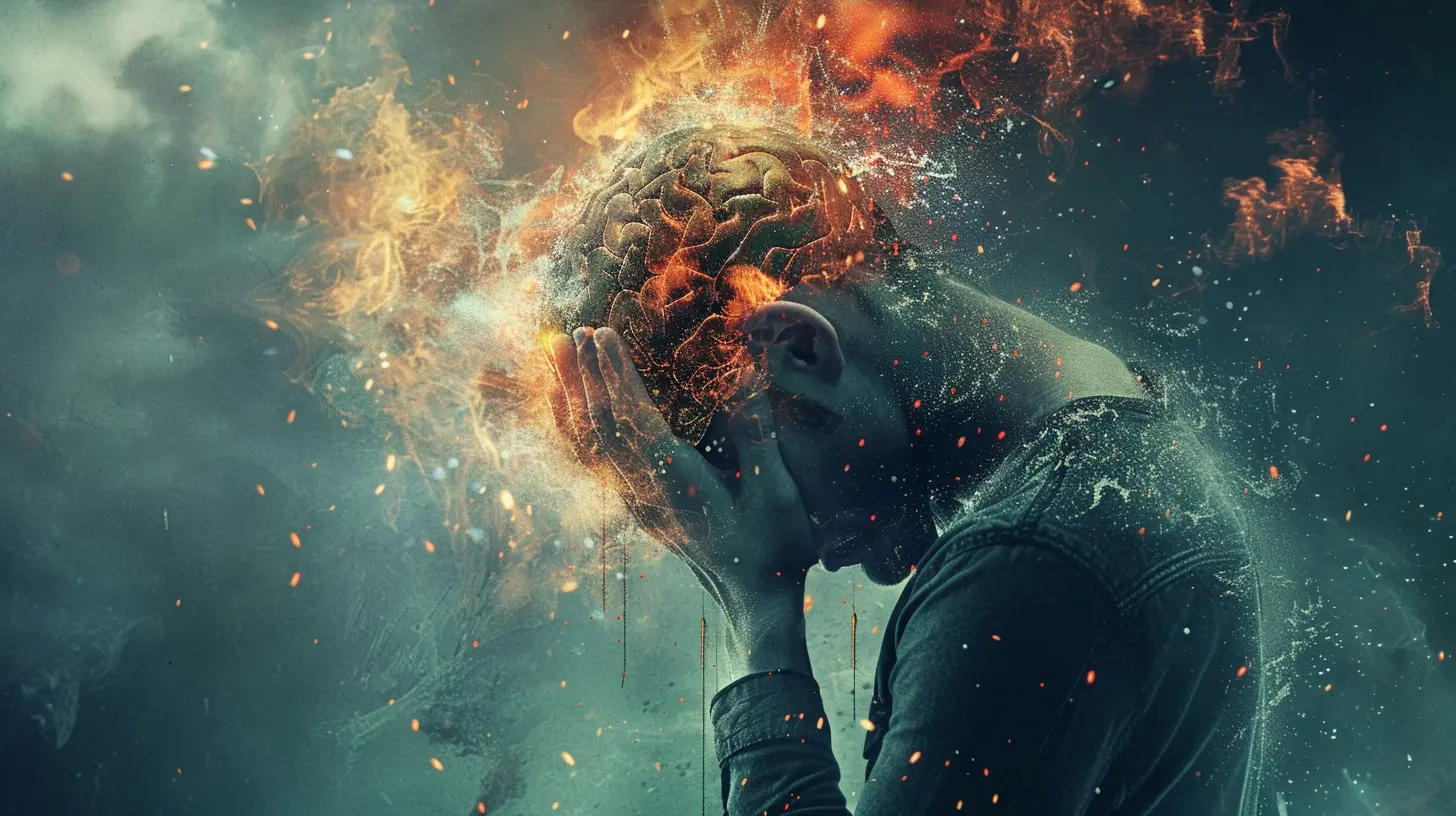The Science Behind Anxiety: What Happens in the Brain?
7 October 2025
Let’s be real: anxiety is that shadow in the corner of your mind that appears uninvited, making your heart race, palms sweat, and thoughts spiral into places you’d rather not visit. It’s sneaky, gripping, and for many of us, a daily visitor we wish would just leave us alone. But have you ever stopped and wondered—what’s actually going on in our brain when anxiety hits?
This isn't just another vague “mental health 101” talk. We're diving deep—into neurons, chemicals, and those quirky little brain structures that may be sabotaging your peace. Prepare yourself—you’re about to crack open the mysterious, and often misunderstood, science behind anxiety.
What Exactly Is Anxiety?
Before we dive into synapses and brain chemistry, we’ve got to wrap our heads around what anxiety really is.Anxiety isn't just being worried about a job interview or a first date. It’s your brain’s built-in alarm system going off, saying, “Hey! Danger might be around the corner!”—even when there’s no actual threat. It’s closely tied to our “fight or flight” mechanism, which, to be fair, was super helpful for our ancestors who had to dodge saber-toothed tigers. But now? It’s often overreacting while we’re sitting in traffic or choosing what to say in an email.
Anxiety can be useful in small doses—it sharpens your focus, motivates you to prepare, and keeps you on your toes. But when it overstays its welcome, that’s when we run into trouble.
Big Players in the Brain: The Anatomy of Anxiety
Our brains are a bustling command center, and anxiety is a mess of multiple systems working together (or not-so-together). Let’s meet the key members of this anxious orchestra:🧠 The Amygdala – The Fear Factory
Think of the amygdala as your brain’s personal security guard. It’s a tiny almond-shaped structure buried deep in the brain, and it’s constantly scanning for threats.When it senses danger, whether real or imagined, it slams the emergency button—hard. It triggers fear, floods your body with stress hormones, and sends all kinds of signals to other brain areas.
But here's the catch: the amygdala doesn’t always get it right. It can overreact to harmless triggers, like public speaking or a harmless text message delay, as if you’re being chased by a lion.
🧠 The Prefrontal Cortex – The Voice of Reason
Now, this is the “CEO” of your brain. Located at the front of your head, the prefrontal cortex handles things like decision-making, assessing risks, and emotional control.Ideally, it keeps the amygdala in check. It's supposed to say, “Relax, it’s not a big deal.” But in anxious brains? This system can get totally overridden. It’s like the security guard (amygdala) setting off the fire alarm, and the CEO (prefrontal cortex) can’t even pick up the phone to calm things down.
🧠 The Hippocampus – Memory Lane
Then there’s the hippocampus—your brain’s memory center. It helps you remember what’s dangerous and what’s not. But it can also misfile memories, making you associate neutral situations with past fear or trauma. That’s why someone with social anxiety might start panicking at a party even if nothing bad has ever happened there.
Neurotransmitters: The Brain’s Chemical Text Messages
If brain regions are the players, neurotransmitters are the fuel. These are the chemical messengers zipping around in your brain, telling neurons how to behave. Let’s look at a few key ones involved in anxiety:⚡️ Cortisol – The Stress Hormone
Cortisol is the ultimate stress companion. It helps you respond to threats by increasing blood sugar, sharpening your senses, and even dulling pain. But chronic anxiety means too much cortisol, which can actually shrink brain structures (like the hippocampus), mess with memory, and keep your body in constant survival mode.⚡️ Adrenaline – The Panic Button
You’ve felt this one. That sudden jolt when your stomach drops? That’s adrenaline flooding your system. It’s great in a crisis but draining when it's constantly activated by modern stressors—like work emails or existential dread.⚡️ Serotonin – The Mood Balancer
Low levels of serotonin are often tied to depression and anxiety. It's like the brain’s thermostat for calm. When it’s low, your brain’s ability to regulate mood, sleep, and even pain perception gets totally out of whack.⚡️ GABA – The Chill Pill
GABA (gamma-aminobutyric acid) is your brain’s brake pedal. It calms activity and stops your thoughts from running rampant. In anxious individuals, GABA levels are often low, meaning the brain is stuck in “go-go-go” mode without any way to pump the brakes.
The Anxiety Feedback Loop (And Why It’s So Hard to Break)
Here’s where it gets wild.Anxiety isn’t just a momentary reaction—it can become a loop. Once your brain gets used to overreacting, it can literally rewire itself to become more anxious over time. This is thanks to something called neuroplasticity.
Let’s break that down: imagine a snowy field. The first time you walk through it, it’s tough. But if you take the same path every day? Eventually, a trail forms. That’s what anxiety does in your brain—it creates a path, then reinforces it, making those anxious thought patterns harder to escape.
And the more you avoid the thing making you anxious? The more your brain says, “Yep, that must be dangerous.” So the cycle continues.
Genetics vs. Environment: Nature or Nurture?
You might be wondering—are some of us just born anxious?Well, yes and no.
🧬 The Genetic Link
Studies show there’s a hereditary component to anxiety. If it runs in your family, you may be more prone to it. Certain genes affect how your brain regulates serotonin and other neurotransmitters, making you more sensitive to stress.But genes aren’t destiny.
🌍 Environmental Influences
Your upbringing, trauma, relationships, even your diet—all these things shape the way your brain responds to anxiety. Childhood experiences, especially, play a massive role. A chaotic or unsafe environment can set your amygdala on high-alert mode for life.Can Anxiety Change Your Brain Over Time?
Short answer? Absolutely.When anxiety becomes chronic, it doesn’t just “feel bad”—it changes your brain structurally and chemically. Here’s how:
- Hippocampus shrinkage: Chronic stress can reduce its size, impairing memory and learning.
- Amygdala growth: A hyperactive amygdala might even grow larger, becoming more sensitive.
- Weakened Prefrontal Cortex: Your ability to reason and control emotions can erode.
But here’s the good news: just like your brain can wire itself for anxiety, it can also rewire for resilience. It’s not easy, but it’s definitely possible.
So, What Calms the Anxious Brain?
Thanks to science, we’re learning more every day about how to soothe an anxious brain without just numbing it.🧘 Mindfulness & Meditation
You’ve probably heard this a thousand times, but it’s not just spiritual fluff. Mindfulness literally strengthens the prefrontal cortex and weakens the amygdala, like doing brain push-ups for calm.🧠 Cognitive Behavioral Therapy (CBT)
CBT is one of the most effective therapies for anxiety. It helps reframe irrational thoughts and break the fear loop, teaching your prefrontal cortex how to stand up to the amygdala again.💊 Medication
Sometimes, your brain chemistry needs a little help. SSRIs (Selective Serotonin Reuptake Inhibitors) and anti-anxiety meds can regulate neurotransmitter levels and give your brain space to heal.🏃♂️ Exercise
Exercise increases GABA, serotonin, and even enhances neuroplasticity. Plus, it gives that excess adrenaline somewhere to go.🍲 Nutrition
What you feed your brain matters. Omega-3s, magnesium, probiotics, and leafy greens all play a key role in managing anxiety. And yes, too much caffeine? Big nope for anxious brains.Final Thoughts: You're Not Broken—You're Wired Differently
Anxiety isn’t a flaw. It’s not weakness. It’s your brain doing what it was designed to do—just a little too well. The science behind anxiety tells us that this condition is deeply rooted in our biology, chemistry, and life experiences.But now that you understand what’s happening under the hood, you can begin to untangle the wires, calm the panic button, and build new, healthier neural pathways. It's not about “fixing” yourself but learning to work with the brain you've got.
Take a breath. You’re not alone in this, and you’re definitely not powerless.
all images in this post were generated using AI tools
Category:
AnxietyAuthor:

Alexandra Butler
Discussion
rate this article
1 comments
Scout Hernandez
Great article! 🌟 It's fascinating to learn how our brains respond to anxiety. Understanding the science behind it can empower us to manage our feelings better. Thanks for breaking down such complex concepts into easily digestible insights!
October 13, 2025 at 4:52 PM

Alexandra Butler
Thank you for your kind words! I'm glad you found the article helpful in understanding anxiety. Empowering readers with knowledge is the goal!


